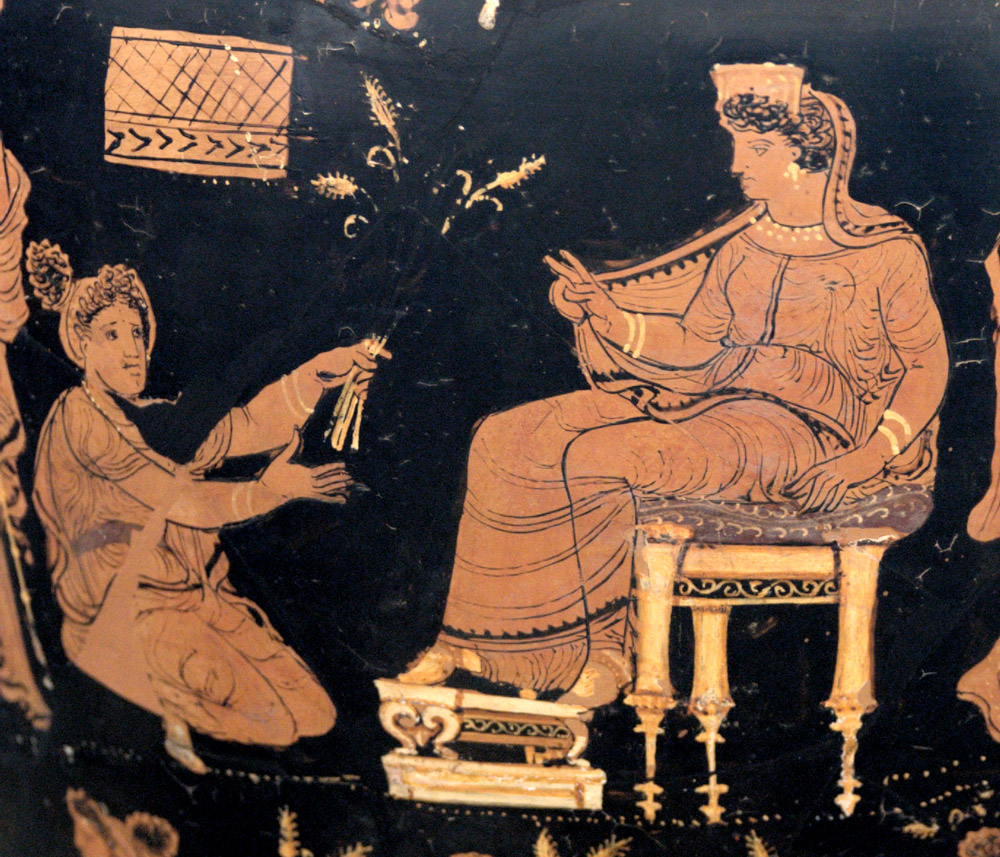Just as perplexing is the diminutive and feminized image of Christ, with no beard; long, flowing hair; and a pointy right breast.
According to Wikipedia, Agostino di Duccio was an associate of Donatello. Both were Renaissance artists with a particular interest in classical sculpture. It is possible that the plaque may have been modeled on a classical image of the goddess Demeter. The flanking figures on the plaque hold a circle of grain stalks, and more stalks sit in the basket behind Bridget. Such stalks, especially in baskets, are often seen in classical images of the goddess. The saint's gown resembles the high-waisted chiton worn in those images and does not resemble the garments in other portraits of St. Bridget. Compare the seated pose, the garments, the basket, the stalks, and the secondary figure in this image of Demeter with Metanira, to whose family she gave the art of agriculture:

